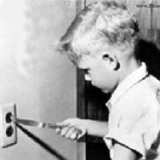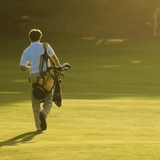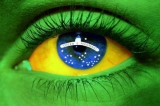- Forum
- General Discussion | Introductions | Off Topic Forum
- Photography General Discussion
- How close can I get before a 50mm lens distorts a model's features?
How close can I get before a 50mm lens distorts a model's features?
-
 Topic Author
Topic Author
- iKokomo
- Newbie
- Follower: 1
-
Points:
1594
Post #714568
-

- Ozzie_Traveller
- Apprentice
-
- Currently using a Panny FZ-300 and FZ-2500 with occasional use of a Panny mirrorless G-series
- Followers: 124
- Posts: 2713
-
Points:
54251
Post #714575
What "used to be" norms for faces have often disappeared with the media's frenzy for using wide-angle lenses stuck up the noses of politicians ~ and we have become used to seeing it
The old rule-of-thumb related to the vertical height comparison in that a person's nose was about the same as their ear ... and when you were too close the nose 'grew' too large.
This led to many 'togs using the 85mm lens (in FF cameras) and setting a minimum subject distance of about 1,5m / 5ft. With the 50mm on your APS camera, the image size will be much the same as above, so maybe the 1,5m / 5ft will apply as well. It will need some experimentation from you ~ and your model
Hope this helps
Phil from the great land Downunder
www.flickr.com/photos/ozzie_traveller/sets/
-

- Nikon Shooter
- Oh Wise One
-
- 3S 3X 810 850
- Followers: 197
- Posts: 13795
-
Points:
88932
Post #714577
iKokomo wrote: I know if I am too far away, the background is not blurry
You know?
Three points will have a direct effect on the "bokehliciousness" of a shot:
- aperture
- closer focusing distance
- distance between subject and BG.
iKokomo wrote: I was wondering what the "closest" I can get to my model before the face becomes distorted?
It is not only the face, the body too.
Standing? Mid thigh up.
Sitting with bent knees? The whole figure.
Light is free… capturing it is not!
-

- fmw
- Newbie
- Followers: 12
-
Points:
12122
Post #714693
-

- TCav
- The Lounger
-
- Nikon D7200. Sony A77 II. Pentax KP.
- Followers: 84
- Posts: 1014
-
Points:
30577
Post #714724
In general, head-and-shoulders portraits should be taken at a focal length of from 85 mm to 135 mm, on a 'Full Frame' body, in order to compose the portrait, so you'll be sufficiently distant to avoid the kind of perspective distortion you're trying to avoid.
-

- TCav
- The Lounger
-
- Nikon D7200. Sony A77 II. Pentax KP.
- Followers: 84
- Posts: 1014
-
Points:
30577
Post #714954
-

- Jon East
- Has the Hang of it
-
- Sony A7R III
- Followers: 62
- Posts: 97
-
Points:
2094
-

- TCav
- The Lounger
-
- Nikon D7200. Sony A77 II. Pentax KP.
- Followers: 84
- Posts: 1014
-
Points:
30577
-

- Kenta
- Photography Hooked
-
- Nikon D810
- Followers: 172
- Posts: 997
-
Points:
13192
-

- Nikon Shooter
- Oh Wise One
-
- 3S 3X 810 850
- Followers: 197
- Posts: 13795
-
Points:
88932
Post #717127
Kenta wrote:
so true, but then again, the 50mm on DX is ~75mm right?
No, NOT right!
It will have the same focal length but only the centre of the image will
be captured… giving rendering a different angle of view. Nothing else.
Mind you, the expected distortion will then appear less problematic.
Light is free… capturing it is not!
- Forum
- General Discussion | Introductions | Off Topic Forum
- Photography General Discussion
- How close can I get before a 50mm lens distorts a model's features?
Latest Reviews
The Canon EOS R100 is an entry-level mirrorless camera introduced in 2023. But just because it’s an entry-level camera doesn’t mean it’s a bare-bones camera. Find out why in this review!
Nikon’s retro-looking Nikon Zfc is anything but retro. Under its classic body is a host of features and amenities that make it a worthwhile compact mirrorless camera for 2024.
The Canon EOS R50 is one of the newest R-system cameras from Canon. Is it worth your money? Find out all the details you need to know in this comprehensive review.
The Sony FE 70-200mm f/2.8 GM OSS II is Sony’s flagship mirrorless zoom lens. As such, it’s loaded with features and has a top-shelf build quality that makes it a top pick!
Forum Top Posters
-
1TCav 5 posts
-
2Prago 4 posts
-
3CharleyL 4 posts
-
4Razky 4 posts
-
5Randy Shaw 4 posts
-
6Sandy Smith Photos 3 posts
-
7CaptNemo 3 posts
-
8Hassner 3 posts
-
9db3348 3 posts
-
10Foggy 3 posts
Latest Articles
The Canon EOS R100 is an entry-level mirrorless camera introduced in 2023. But just because it’s an entry-level camera doesn’t mean it’s a bare-bones camera. Find out why in this review!
Are you ready to upgrade your camera? Before buying new, you might consider the value of purchasing used gear to save money.
The Olympus OM-D E-M10 Mark IV is a micro four thirds camera released in 2020. It’s an entry-level system along with the OM-D E-M5 Mark III. Use this guide to determine which one is best for you!
Blue hour photography might not be as well known as golden hour photography, but it is every bit as good a time to create epic images of landscapes. Learn how in this quick tutorial!
Nikon’s retro-looking Nikon Zfc is anything but retro. Under its classic body is a host of features and amenities that make it a worthwhile compact mirrorless camera for 2024.
Moving from taking snapshots of your dog to creating beautiful images doesn’t have to be that difficult! Use the tips outlined in this dog photography guide, and you’ll get better results in no time.
Acrylic print photos are a beautiful way to display your favorite images. But they don’t come without some questions. Get all the answers you need about this medium in this guide!
Where do you get your landscape photography inspiration? Is it from masters like Ansel Adams? Or perhaps viewing art from other genres? We’ve got these and a few other sources for you to check out!

















